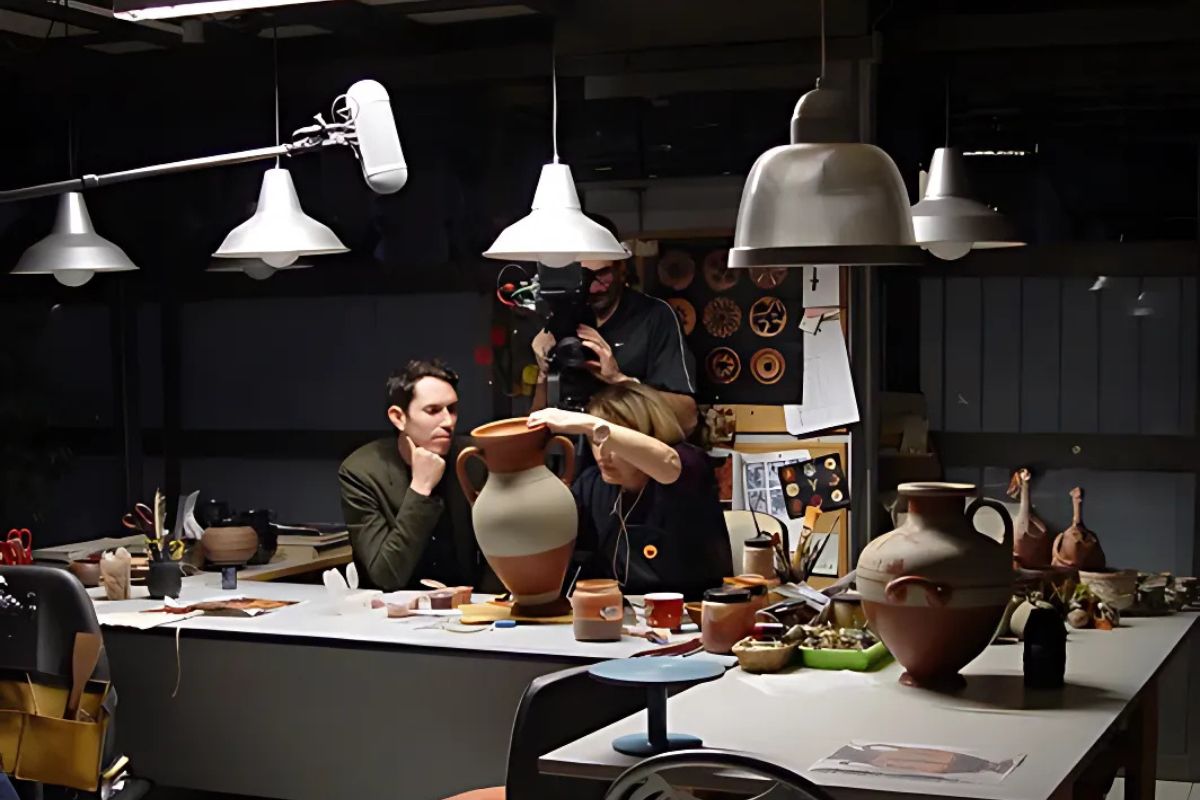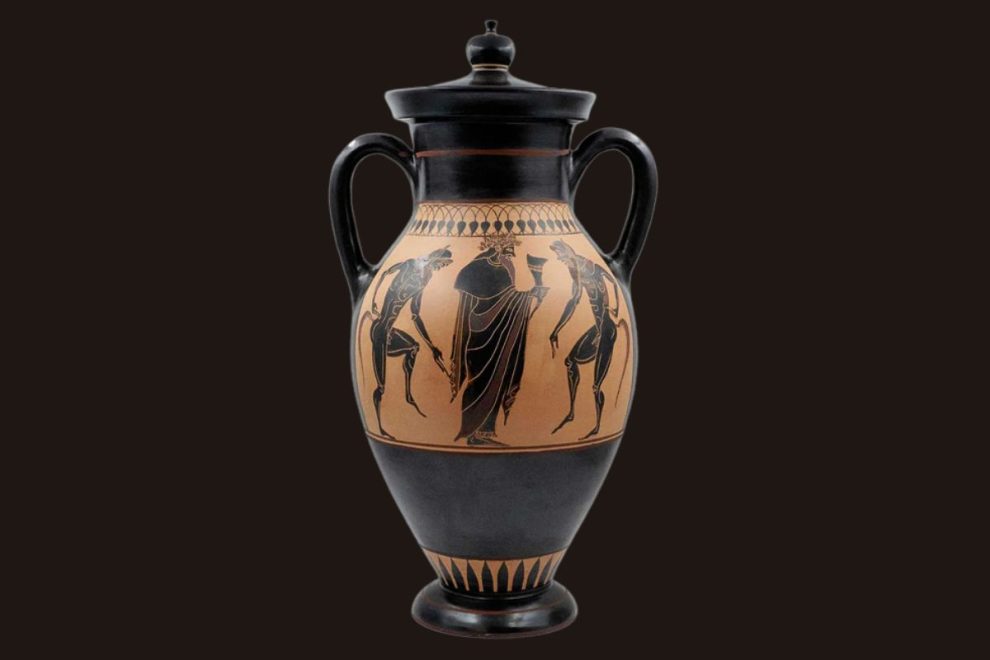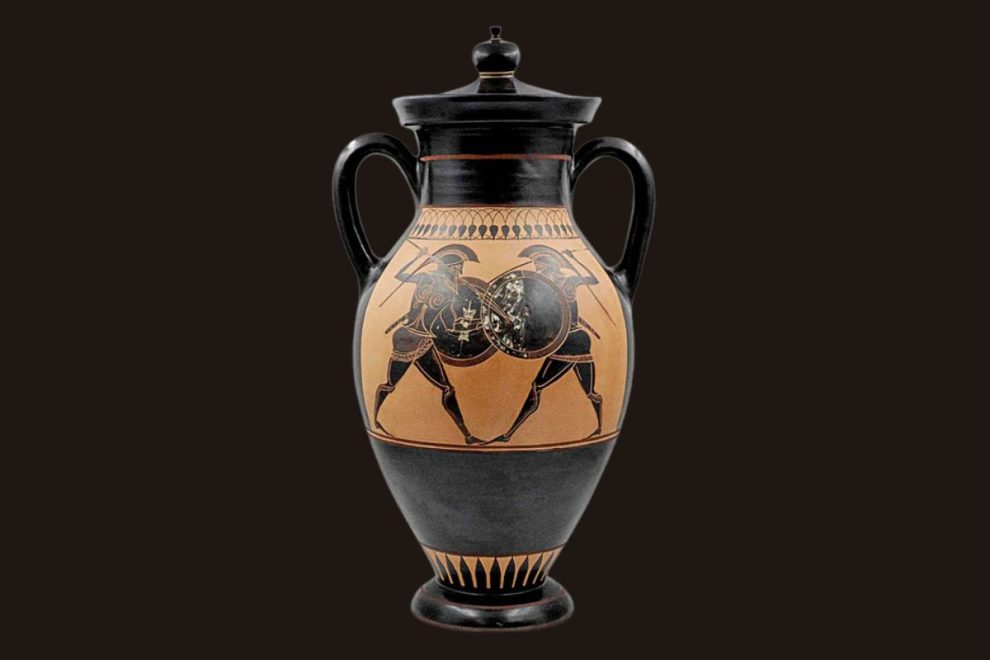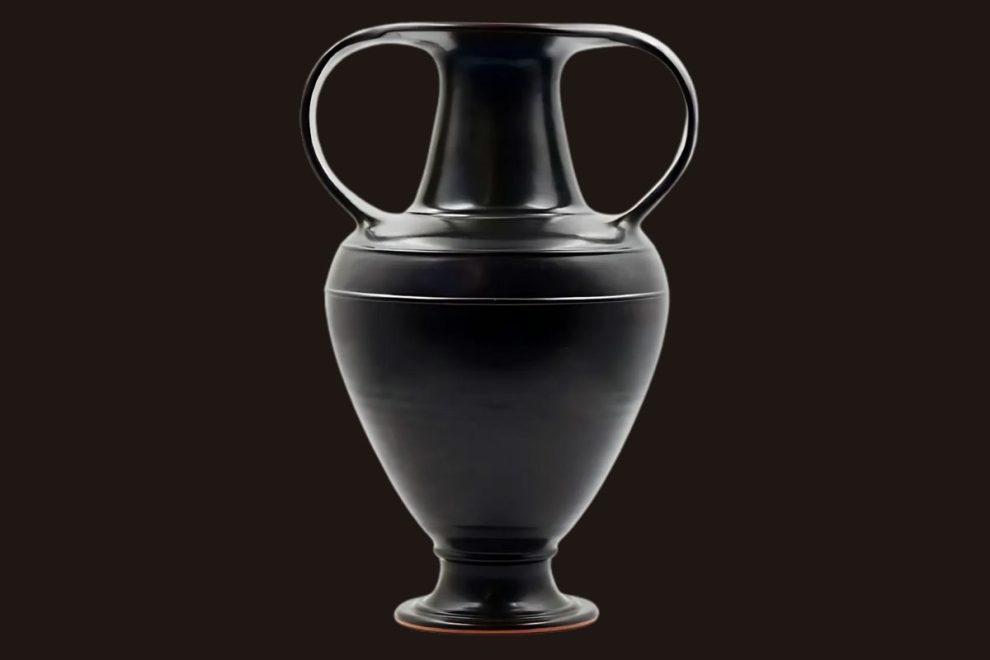
Amphorae are famous ancient Greek vases.
Key Highlights
- Amphorae were pivotal in ancient Greek and Roman commerce, primarily used for storing and transporting olive oil, wine, cereals, and other goods across the eastern Mediterranean.
- This distinctive two-handled amphora Greek vase featured two main designs: neck amphora (sharp angle) and belly amphora (continuous curve).
- Amphorae evolved significantly from the 7th century BC through the Roman period, adapting to diverse needs such as decoration, trade, and burial.
- Artistic embellishments like vase painting and inscriptions also distinguished amphorae in function and identity.
- Iconic types include Panathenaic prize amphorae used in Athens festivals, offering cultural and historical insights.
They are some of the most impressive objects from the past. These vases have two handles and were used for different purposes, mainly to transport goods like olive oil and wine. They are known for their beautiful shapes and artistic designs. The amphora Greek vase is a term often used to describe this iconic form. Amphorae show both creativity and beauty. Their design changed to fit different needs, and they were common in Greek and Roman life. Let’s look into their history, types, and art.

Historical Context of the Amphora Greek Vase
The amphora is a container that dates back to ancient times. It was important for storing and moving goods. This shape started in the eastern Mediterranean. At first, amphorae were simple, but they quickly became very useful. Over time, they developed into more complex designs and became one of the main shapes in Greek pottery. They were not just for transport; they also had roles in ceremony and art. The amphora Greek vase is a key example of how form and function merged in antiquity.
In the Roman Empire, amphorae remained key tools for trade. They had unique designs to show what was inside. These included olive oil and fish sauce, helping with trade between different areas. The stamps and inscriptions on them give archaeologists important information about ancient trade and economies. As they were used more, amphorae became valued items that showed how art and practicality came together in ancient life.
The Origin and Evolution of the Amphora Vase
The amphora comes from the early pottery traditions of the eastern Mediterranean. By the 7th century BC, this vessel had changed a lot. Its design was influenced by older Minoan and Mycenaean pithoi styles. Greek artisans made the shape better, creating two main types: the neck amphora and the belly amphora. Each type was used for different purposes, like storage, transport, and rituals. As time passed, amphorae changed to fit the needs of growing civilizations.
During the Roman period, their shapes changed to be better for sea transport. They had pointed bases and slim forms, which helped stack them in ship cargo holds. This design made it easier to trade olive oil, wine, and cereals widely. This change was very important for trade across the Mediterranean. Besides being useful, amphorae became art pieces for vase painting. The Greeks focused on detail, while Roman amphorae became more practical. This change shows how art and commerce balanced in ancient pottery.
Key Uses in Ancient Civilizations
Amphorae played important roles in the daily lives of ancient Greeks and Romans. One of their key uses was for storing and transporting olive oil. Olive oil was vital for cooking and religious ceremonies. These strong containers helped keep the oil fresh during long sea trips, showing how practical they were. Wine storage was also important. Amphorae were perfect for keeping wine safe from air damage. Some had stamps or writing that showed the wine’s year and place of origin. This was an early form of labeling. Amphorae became must-haves at Greek feasts and Roman banquets, highlighting how important they were. Amphorae didn’t just hold food items. They were also used to carry grains, fish, and honey. They served important purposes too, like being awarded as prizes in Athens during festivals. This range of uses shows how essential amphorae were to ancient life, combining practical use with cultural meaning.
How Were Amphoras Made in Ancient Greece?
Making amphorae in ancient Greece showed fine workmanship. Craftsmen used wheel-throwing methods. They started with the body, then added coils for the neck, handles, and rim. Each part dried bit by bit to make it strong. After putting everything together, terracotta amphorae often received resin inside. This sealed liquids like oils and wine. Details like stamps and inscriptions were added before firing them. These markings gave the vessels their unique identities. They showed the workshops, kept track of content quality, and followed trade routes. Once they were decorated, amphorae were fired at high temperatures. This made them strong and attractive. This process highlights how creative ancient potters were in blending function and art.

Greek Amphora Vase Types
Amphorae were mainly split into two main types to fit different needs. The neck amphora has a clear sharp angle where its body meets its neck. This type was often used for storage and in rituals like funerals. On the other hand, the belly amphora has a smooth, continuous curve. This type was popular for holding wine and was also nice to look at. Each type has its rare mix of use and design. They worked as practical containers but also served as creative spaces for vase painting. Amphorae show the practical and cultural talent of Greek artisans.
Neck Amphora
The neck amphora is known for its sharp and clear change between the neck and the body. This design makes it easy to attach the handles right to the neck. It was great for pouring and moving liquids. This type of amphora was often used in funerals and sometimes served as a grave marker. This shows how important it was in their culture. Early neck amphorae from Greece’s Geometric period only had simple designs. Over time, the Nolan amphora came along, which had a smooth curve and showed off detailed red-figure pottery art. This shift made the amphora more ceremonial rather than just practical. These neck amphorae were great for keeping liquids like olive oil and wine because their shape helped reduce spills. The mix of practical use and beautiful design is why the neck amphora is still admired in ancient Greek pottery today.
Belly Amphora
Belly amphorae are different from neck amphorae. They have a smooth, continuous curve from the neck to the base, which looks elegant. This shape allows for more storage space, making them important for trade and home use. They are usually made from terracotta, which is strong and long-lasting. Belly amphorae are one of the main vessel shapes in Greek pottery. They were made a lot during the archaic and classical periods. Their unique shape helps people easily recognize them, particularly for storing and distributing wine. This made them very important in the Mediterranean trade. Some types, like the pelike, changed the normal shape of the belly amphora by moving the widest part down a bit. This small change shows how creative the ancient Greek potters were. Belly amphorae represent a great mix of function and style that is key to amphora design.
Panathenaic Prize Amphora
Panathenaic prize amphorae were extraordinary vessels awarded during the Panathenaic Games in Athens. These amphorae featured black-figure decorations, depicting Athena on one side and athletic events on the other. Filled with sacred olive oil, they were cherished trophies for victors. Their historical importance becomes clear through their inscriptions: “I am one of the prizes from Athens.” This mark of distinction highlights their use as ceremonial treasures. Beyond symbolism, their shape remained practical for transporting contents securely.
Panathenaic amphorae typically featured depictions of the goddess Athena on one side and the associated athletic event on the other. People filled these vases with sacred olive oil sourced from Athena’s grove, emphasizing their religious and cultural importance. Officials used them ceremonially as prizes and awarded them to victors during the Panathenaic religious festivals in Athens. Artisans made these amphorae from terracotta and decorated them using the black-figure vase painting technique, highlighting both their artistic and symbolic value. These amphorae remain invaluable artifacts reflecting athletic achievements and cultural heritage.

Artistic Aspects
Common Designs and Decorations
Amphorae decorations included shapes, stories from myths, and scenes from daily life. Vase painting became popular with black-figure and red-figure styles, showing art that tells a story. Early geometric designs changed over time to show lively images of gods, heroes, and ceremonies. The designs not only looked good but also served a purpose. Stamps on amphorae showed details like workshop names or quality checks. These marks gave useful information and added visual interest, making the amphorae more attractive. Amphora designs changed from workshops in Athens to those in ties to Magna Graecia. This variety shows the rich cultural influences that inspired these amazing creations.
Symbolism in Patterns and Shapes
The designs on amphorae say a lot about the beliefs of ancient cultures. The shapes of these containers, with their pointed bottoms and smooth curves, show both usefulness and beauty. The neck and body of the amphora stood for practicality and special ceremonies. Decorative patterns, like ivy leaves and starry designs, on vase painting made amphorae important for telling stories. These images cultural ideas and made amphorae both useful and great for sharing stories. Amphorae were more than just containers. They represented balance by combining artistic meaning while also meeting daily needs. This is why archaeologists still admire the designs on them today.
The Amphora Greek vase shows the skill and use of ancient Greek culture. It comes in many types and has many detailed designs. The amphora not only shows what people used in their everyday lives but also their art and beliefs. Knowing more about the history and the talent behind these vases helps us see the hard work and creativity of artists from long ago. As you look into the world of amphoras, think about how these items still affect art and design today. If you want to learn more about this interesting topic, feel free to contact us and start a chat!
